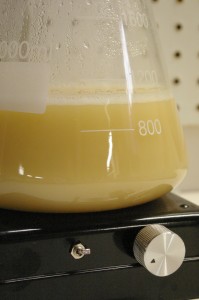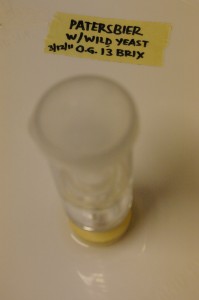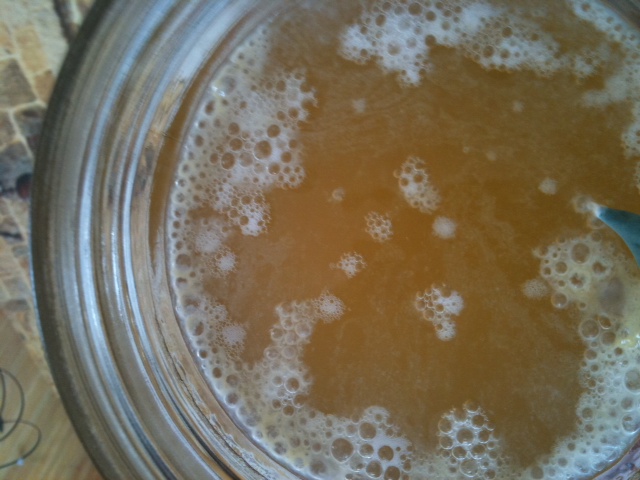dos_perros
Well-Known Member
Wow! I just read all 44 pages of this today and really want to give this a go when it gets a little nicer here in Idaho. I am thinking a nice saisson made with my local yeasties would be awesome!

it's actually easier to get a culture of yeast growing when the temperature outside is around +2°C for about two weeks straight. Much more then that and it becomes too much of a breeding ground for mold (At least, that's what happened to me)
I captured my wild yeast at about 42 F here in DC.
I stepped it up twice and left it uncovered on the kitchen counter for a month (well, cheesecloth loosely placed on top of jar). I just pitched it into 5 gal of Belgian Pale Ale wort on Friday and it was chugging away after 8 hours. Smells good & the krausen looks just like every other primary ferm. with a laboratory yeast.

Smells good & the krausen looks just like every other primary ferm. with a laboratory yeast.

Actually, the wild yeast is in fact blowing around in the air. You don't need bugs landing in your wort to catch it! I used paint straining bags and was actually very successful - see post above...

veeellgee, your original post was one of the most helpful in this thread to me, and strongly influenced my technique.
after a couple nights with no luck, I changed my position to one underneath an orange tree and very close to a dense flower bed. in 24 hrs I had this:

I'm gonna give it a few more days as is, then try to step it up and wash it...


Does it matter the type of DME that you use?
Has Anyone done this in a cold place. I am in Alaska, i think i might have to wait until summer or are the Wild yeast out in the winter. The Temp has been ~10F
its hard for me to believe that your yeast will produce smells that are really like the air you get it from.
I tried to get some wild yeast last week in NH (air smells great) when the temps hit 50F. left a pan of wort out for two days. So far there is a little white gunk around the edges of the jar I put it in but the stuff smell pretty lousy. A friend of mine just sent me some agar plates to try tho. going to see how that works when the spring weather returns.
Started last night: http://twitpic.com/4cxkqw
I went with 2L ~1.030 wort, .5 oz of aged hops boiled for 30 minutes with 1/4 tsp of yeast nutrient. I chilled and aerated the wort and left some outside, some upstairs, and some next to my barrels (all covered with cheesecloth).
Tonight or tomorrow morning I'll move the starters to bottles/growlers to get them away from oxygen. Im hoping to brew a lambic-ish beer using the best one(s) in a couple weeks. If all goes to plan by next spring it should be ready for some fruit from the mulberry tree in my backyard (a true DC Lambic).
Is that carboy in the lower left hand corner labeled "fruit salad"?
It is a blend of a funky pale sour with guanabana (aka sour sop) and a lactic brown ale with blackberries and black raspberries. If you can think of a better name Im all ears



nice! thank you. I guess i should just keep stirring in some light DME? at what point should I pitch?
here's an update on my end:
stepped up my wild starter to about a liter for a few days:
http://www.overcarbed.com/wp-content/uploads/2011/03/slurry.jpg[IMG]
and pitched about 2/3 of it into ~4 gallons of a patersbier I threw together this weekend:
[IMG]http://www.overcarbed.com/wp-content/uploads/2011/03/airlock.jpg[IMG]
you can check out my sig link for more info. will post results when I keg this one.[/quote]
For anyone interested, here is a pic. The BB fermenter in the background got the wild yeast (foreground is other half of the batch that got a 1.5L wyeast starter).

Enter your email address to join: